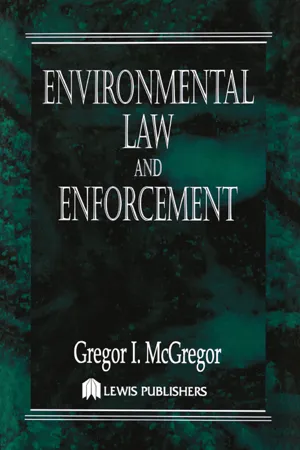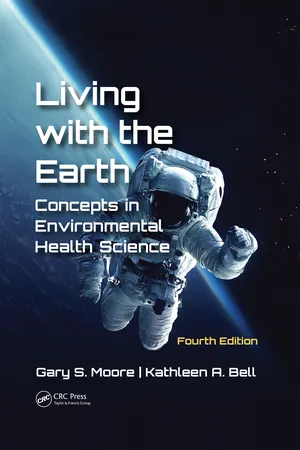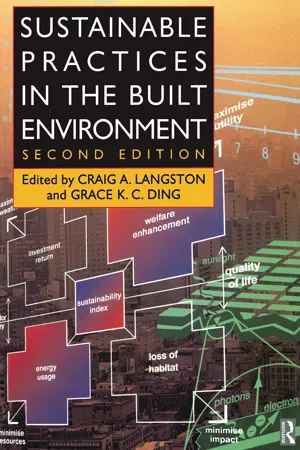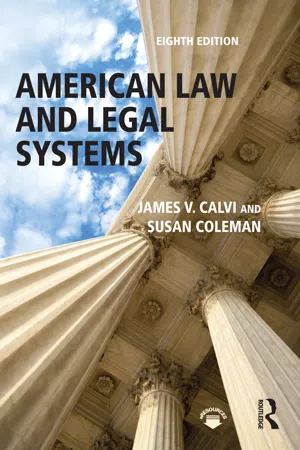US Environmental Law
US Environmental Law refers to the body of laws and regulations that aim to protect the environment and natural resources within the United States. It encompasses a wide range of issues, including air and water quality, waste management, and conservation of natural habitats. These laws are designed to promote sustainable practices and hold individuals and organizations accountable for their impact on the environment.
5 Key excerpts on "US Environmental Law"
- eBook - ePub
- Gregor I. McGregor(Author)
- 2021(Publication Date)
- CRC Press(Publisher)
...CHAPTER I: INTRODUCTION ENVIRONMENTAL LAW DEFINED Environmental law is not found in just one book on the shelf of a law library. It is not found in one volume of federal or state statutes. It is not found in one set of published court decisions. It is not found in one compilation of local bylaws and ordinances. Instead, environmental law takes many forms, some old and some new, and no one government agency or court has a monopoly. Essentially, environmental law is a body of federal, state, and local legislation, in the form of statutes, bylaws, ordinances, and regulations, plus court-made principles known as the common law. These laws and legal principles govern the behavior of persons, corporations, government agencies, and other public and private legal entities to minimize the impacts of their activities on people and natural resources. In this respect environmental law encompasses public health as well as conservation, pollution control, and land use control. Environmental law has pervaded many areas of legal practice and fields of private and public decisionmaking. In a wide variety of court cases involving pollution control, real estate, planning law, eminent domain, administrative law, injunctions, money damages, and criminal prosecutions, it has been the subject of important litigation...
- eBook - ePub
Real Estate Law
Fundamentals for The Development Process
- Peter Smirniotopoulos(Author)
- 2016(Publication Date)
- Routledge(Publisher)
...Complying with environmental laws and managing environmental risk are complex endeavors, and even the wary can fall into traps. Failing to properly anticipate and fully address environmental issues may have severe consequences for the Developer, including: Fines Project delays Operational shutdowns Loss of project financing Imprisonment for parties found liable Environmental Law issues manifest themselves in a great variety of ways and take many forms. In the United States, environmental laws exist at the federal, state, and local levels. While federal law predominates, state environmental statutes and regulations, and even local environmental ordinances, may impose additional requirements over and above federal statutes and regulations. However, it is well beyond the scope of this textbook to cover the full range of state and local environmental regulations. Consequently, the focus of this chapter will be on the federal government, which has adopted and enforces a panoply of environmental regulations. The federal framework of environmental laws and regulations is comprised of approximately twenty legislative enactments by the U.S. Congress, starting with the National Environmental Policy Act, signed into law by President Richard Nixon on January 1, 1970, and followed by his July 9, 1979, Executive Order creating the U.S. Environmental Protection Agency. Seven of the most significant federal environmental laws from the perspective of real estate development are listed later and covered in detail in this chapter. These laws were enacted by Congress, but the details are in large measure found in a substantial body of federal regulations promulgated and administered by the Environmental Protection Agency (hereinafter the “EPA”) under the EPA’s Rulemaking Authority, as granted by the statutes that Congress enacted...
- eBook - ePub
Living with the Earth, Fourth Edition
Concepts in Environmental Health Science
- Gary S. Moore, Kathleen A. Bell(Authors)
- 2018(Publication Date)
- CRC Press(Publisher)
...Should these differences be resolved, and the same version approved by both House and Senate, the bill moves forward to the president who may sign it into law or veto it. Although Congress may override a veto by a two-thirds majority vote in each chamber, it is very difficult to do so. Environmental Laws Are Part of a System Environmental law is more than a collection of unrelated regulations; it is a system of statutes, regulations, executive orders, factual conclusions, case-specific interpretations, and accepted environmental principles that have evolved into “Environmental Law.” 2 Understanding the unifying principles of this law system is both a challenge and the key to understanding its complexity. Environmental law is a system that uses all of the laws in our legal system to minimize, prevent, punish, or remedy the consequences of actions that damage or threaten the environment and public health and safety. Environmental law encompasses all the environmental protections that originate from (1) the United States Constitution and state constitutions; (2) federal, state, and local statutes; (3) regulations published by federal, state, and local agencies; (4) presidential executive orders; (5) court decisions interpreting these laws and regulations; and (6) the common law. 2 Virtually all of the environmental laws require some form of compliance that falls within one or more of the following areas: 2 1. Notification requirements 2. Discharge or waste controls 3. Process controls and pollution prevention 4. Product controls 5. Regulation of activities 6. Safe transportation requirements 7. Response and remediation laws 8. Compensation requirements Notification requirements are meant to deal with any intended or accidental releases of pollutants or hazardous wastes that need to be immediately reported to local and state and/or federal authorities...
- eBook - ePub
- Craig Langston, Craig Langston(Authors)
- 2008(Publication Date)
- Routledge(Publisher)
...3) states that ‘any rules or regulations which govern conduct which is likely to affect the environment may fall within the definition of environmental law’. The scope of environmental law is very wide and basically can cover anything relating to the environment. The term environment is defined to include the natural environment such as land, air, forest and water, as well as the urban, the built and the social environment and even the work environment (Environmental Defender's Office, 1992). Therefore, environmental law concerns regulations used to govern the way humans use natural resources so as to maintain such resources for the benefit of future generations. On the other hand, environmental law is trying to find solutions to environmental problems by setting up procedures and guidelines to be followed by decision-makers for purposes relating to the environment. Liability and compensation are well-understood concepts, and can be applied to effectively manage environmental resources and protect against damage and inappropriate use. For example, polluters would be held liable for the damage they cause, not just to compensate victims but more importantly to modify their behaviour so that the damage is averted in the first place. In this way environmental damage is internalized. Common law and statutory law are two mechanisms to achieve it. Common law has a history of precedents in areas such as strict liability, negligence, trespass and nuisance. Issues such as the burden of proof and the costs (and delays) of litigation need to be carefully considered. Common law also extends to the notion of public trust, which both grants and limits the authority of government to control public resources...
- eBook - ePub
- James V. Calvi, Susan Coleman(Authors)
- 2016(Publication Date)
- Routledge(Publisher)
...New advances in science and technology put pressure on the law to keep up with rapid changes in our knowledge of the environment. At the same time, the limitations of science to provide precise answers to the problems of global warming present a serious challenge to those who wish to use the law to protect our environment. A common misconception is that environmental law is a new area of the law. One author, for example, divides the history of environmental protection in the United States into three periods: Premodern (1840–1891), Conservationist (1891–1969), and Modern (1969 to the present). 1 While it is true that courses in environmental law are relatively new to law school curricula, the idea of using the law to protect the environment dates back at least to the thirteenth century. 2 For centuries the common law has recognized that a person is not entitled to the unfettered use of his or her land and that society may impose limits on the use of one’s property. Because environmental law touches so many other areas of law, is fast growing, and is a relatively new field of law, it is somewhat difficult to define. For our purposes, environmental law may be defined as “a technique of environmental engineering designed to control human and nonhuman objects, in order to preserve a stable environmental system.” 3 In this chapter, we will examine three aspects of environmental law. First, we will look at the history of environmental law jurisprudence; that is, we will examine the theories behind laws that protect the environment. Next, we will provide a brief overview of major environmental legislation in the United States, especially those of the Modern period...




